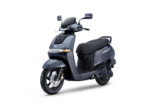
Retrofitting three-wheeler to electric
To boost the electric vehicles on Indian roads the government has brought up a policy that can eliminate personal vehicles in the upcoming decades. With an increase in shared mobility such as metros, monorails, and BRT systems, last-mile connectivity has already acquired the importance of never before. Bicycles and electric three-wheelers can fit this sector. Read the complete to know in detail about the retrofitting three-wheeler to electric.
Passenger transportation is catered by auto-rickshaws and good’s transportation is mainly handled by three-wheeler tempos in the majority of the small, medium, and big towns of developing and developed countries in the world. The need and design of three-wheeler tempos are different from auto-rickshaws. For long-distance travel by road, four-wheelers are suitable as an option to rail or air. For last-mile connectivity is three-wheelers which are more suitable.
The Internal Combustion Engine (ICE) based three-wheelers will pass through a phase of retrofitting and use of hybrid energy sources to fulfil economic and technological needs. It is very important to study retrofitting and hybrid three-wheelers in detail to understand how they can fill the gap of transition from ICE based system to a fully electrically operated model. These vehicles will have a social impact on consumers as they are cost-effective vehicles. Innovative, swapping of battery and fuel tank is proposed to address some of the needs in this transition.
Three-wheelers are still an affordable means of short and medium distance for public transportation and last-mile cargo transportation. Taxi aggregators start-ups like (Ola, Uber, etc) are well established the importance and added cars to their products. Some start-ups operate as if aggregators in the good’s transportation sector and find that they are opting for electric modes of transportation.
6 lakh three-wheelers sold in India
In FY2019-20, more than six lakh three-wheelers i.e., goods carriers and auto-rickshaws were sold out in India and more than five lacs were exported. All such vehicles especially after the vehicle age of 8 to 10 years can be retrofitted to make them operational in city areas where pollution is a big issue.
The concept of hybrid vehicles needs to be incorporated into the tricycle market segment to meet the pollution requirements of the city and its exterior. It is possible to use renewable energy more effectively by hybrid three-wheeler vehicles.
Many industries and researchers have come up with retrofitted and hybrid versions of vehicles using a fuel cell compressed natural gas as well as electricity. Retrofitting in three-wheelers is implemented without considering technical aspects and it is done by local companies.
Start-up E-Trio in India
Many governments are adopting electric vehicles in India, some start-ups are coming with retro fitment kits for Internal combustion engine (ICE) vehicles.
The usage of these kits can be done for deregistered vehicles or currently used vehicles. This will be more economical for consumers than buying a new one. A start-up E-Trio in India is one success story in this field. Most of the time lithium-ion battery of (Nickel-Manganese-Cobalt) NMC or (lithium-ion manganese-oxide) LMO type is used with motor power of 10kw/15kw in such retrofitted 4 wheelers.
Scrappage policy
Auto-rickshaws were manufactured as per BS-IV norms and as per the government “scrappage policy,” the BS-IV vehicles will be dumped off. So, instead of dumping BS-IV vehicles (four-wheeler, two-wheeler, and three-wheeler), they can be retrofitted to an electric one.
More than 2 million auto-rickshaws are there on Indian roads as of now. The daily use of these vehicles is around 50-60km. If these vehicles are retrofitted it will be economical in refuelling as well as the overall maintenance cost of the vehicle will reduce.
Advantages
- Cost-effective if it is available at about 50-60% price less than buying new autorickshaws.
- Due to the removal of ICE parts, there is no vibration and sound like an IC engine.
- The comfort level for driver and passenger is improved as there is no vibration, sound, and driving like an IC engine.
Disadvantages
- In gear type of vehicles, the appearance of the vehicle is not similar to the previous one as a hub motor with a suitable diameter can be fitted in the rear wheel and the battery can go in place of the IC engine area.
- In retrofitting of non-gear two-wheeler the battery is fitted in boot space and the hub motor in the rear wheel, the appearance of the vehicle is the same as the old one.
Now let us now know something most important in retrofitting is about balancing the weight of retrofitted auto-rickshaw. Some parts are listed below which can be turned into lightweight components.
The following methods can be used to reduce weight
- Glass to be replaced with transparent plastic material named polycarbonate
- Headlight/ tail lamp should be of LED type
- Sunroof material to be Rexine
- Mudguards to be of light-weighted plastic
- Wheels rim to be lightweight alloy material
- Mirrors to be replaced by a camera screen
- Seats to be of sponge or polyurethane
- Body parts to be of fibre material
- Use Digital speedometer
Plug-in hybrid three-wheeler concept
The concept of a plug-in hybrid three-wheeler can be operational with many effects on initial cost. By using proposed battery swapping stations and battery-Fuel tank swapping stations it can be made feasible. This hybrid three-wheeler will operate within a city with battery swapping stations. The conventional gas stations can add up to their infrastructure or could be replaced as a whole with a battery swapping station.
Cost of an auto-rickshaw in India
The cost of an auto-rickshaw in India is approximately 1.6 lakh and a Tempo costs around 6.95 lakh. Both costs are too high for ordinary people when they buy them. But these costs will be zero at the time of deregistration. The retrofitting concept will not only enhance the life of the vehicle but also the new retrofit vehicle will be economical.
Retro fitment cost for an auto-rickshaw
The retro fitment cost for an auto-rickshaw will be around 90,000 Rs (excluding registration and government charges) this cost is 30-40% economical than an auto-rickshaw. The performance of the e-rickshaw is matching with the auto-rickshaw. The solution is cost e-effective if available at about 50-60% price less than buying a new E-rickshaw
Overall benefits of a retrofit EV
- There is no vibration, sound, and driving like an IC engine
- The comfort level for driver and passenger is improved as there is no vibration, sound, and driving like an IC engine
- Battery with higher changes in 5000 cycles, will give peace of mind and cost savings for a longer period
- The retrofitting of auto-rickshaws will close some business houses and will create opportunities for new businesses
- The Retrofitting concept can pave the way for many aspiring entrepreneurs who find the EV industry a promising business prospect at the national level need for copper will increase as all retrofitted auto-rickshaws will use an electric motor which will have 2 to 5 kg copper winding in it
- Aluminium may be a solution to it as India is dependent on other countries for copper
- Recycling lithium will be a new type of business open for start-ups in the next decade. As many retrofitted vehicles will use a lead-acid battery, its business will see a lot of growth for the next 20 years
- It will also provide encouraging Job opportunities for the skilled personnel
- Power system operators will also benefit from this scheme as the BSS can be potentially used as a large and flexible resource for network congestion and peak load reduction.
In case of the operational cost of battery swapping stations (BSS), the BSS owner could minimize its operation cost for battery charging/discharge by operating at a least-cost schedule, and further, make a profit by participating in the electricity market and offering extra services. In terms of the cost of real estate, as the BSS owner does not need access to spacious parking lots, substantial cost savings would be guaranteed.
It is proposed that there can be fuel tank-battery swapping stations at the borders of town/ city. This model will be most suitable for industrial cities like Pune, Surat, manufacturing hub cities like Kanpur, Hyderabad and will also be beneficial for agricultural hub cities like Ludhiana etc.
This concept will push hybrid three-wheelers which can help cities to address the issue of pollutions to some extent and make three-wheeler operating costs very low.
(Source-Asian Journal of Convergence in Technology)
Also, read related article: RACenergy’s retrofit Auto rickshaw
If you are an EV manufacturer or EV Dealer or EV Supporter who want to share news related to electric vehicles on our website, please send an email to crm@electricvehicles.in
For the latest electric vehicles news, follow electricvehicles.in on Twitter, Instagram,
Facebook and our YouTube Channels English, Hindi, Telugu and Tamil







